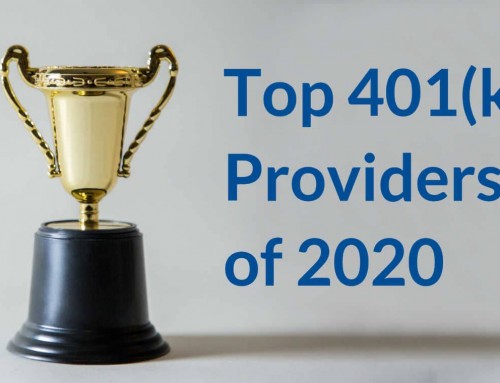If you're a plan trustee, I hope you're paying attention. Employees have been increasingly active fighting against “excessive fees.” Just in the 4th quarter of last year alone, there were eleven major class-action lawsuits filed in federal courts against 401(k) sponsors or providers of retirement products. Most suits allege that participants’ retirement savings were compromised because employers, as plan fiduciaries, failed to act in participants’ best interests and breached their duties under the Employee Retirement Income Security Act (ERISA) by allowing high fees, poor fund choices, and conflicts of interest.
If you are among those who thought only multibillion-dollar plans (Cigna, Edison International, ABB, International Paper, Boeing, Lockheed Martin) were at risk because small- and mid-sized plans won't get sued, think again. A new class-action lawsuit was filed in the Minnesota federal court targeting excessive 401(k) fees in a $9.2 million plan with 114 active participants. Damberg v. LaMettry’s Collision Inc., claims that plan fiduciaries breached their duties under ERISA for allowing excessive fees to be charged for plan investments, record keeping, and administration.
From the Complaint:
Defendants breached their duties under ERISA by
- causing the Plan to pay hundreds of thousands of dollars in excessive fees to third-party service providers;
- selecting inappropriate and imprudent mutual fund classes for Plan assets that exposed Plan participants to excessive fees when lower cost options were available for the same set of investments; and
- selecting investment options that were unnecessarily expensive relative to industry benchmarks and standards. Defendants failed to actively monitor the above providers, fees, investment classes, and investment options and failed to replace them with identical or similar lower fee providers and options.
What It All Means
From experience, I know that in the real world small- and mid-sized business owners are often focused on running their businesses so it's not uncommon for the 401(k) to not receive regular attention. Therefore, the need to know and understand what 401(k) services you bought and who you bought them from come to the forefront. The landscape is extremely confusing because the title “financial advisor” is equally printed on the business card of an experienced and objective advisor as it is of a commission hungry salesperson. Beware of the lamb in sheep's clothing!
According to the May 2016 Retirement Planscape®, a study by Market Strategies International, plan sponsors are indeed focused on fees. “For the first time, the aspect of reducing plan costs outranks all other priorities on which plan sponsors are directing their attention,” said Julia Johnston-Ketterer, senior director at Market Strategies and co-author of the report. Here is a list from the study ranking providers that consumers perceived as good value.
Providers Most Associated with “Good Value for the Money”
- Empower Retirement
- Ascensus
- Fidelity Investments
- Betterment
- OneAmerica
- Vanguard
- Paychex
- American Funds
- ADP Retirement Services
- Wells Fargo
Trusting your service providers is not good enough, however. I have reviewed many plans using the above providers where the plan sponsor was still clearly at risk. There is no substitute for actually performing your duties as a fiduciary.
Protect Yourself
Let's have a look at how to protect yourself from the three points quoted above. Plan Trustees need to obtain information sufficient to enable them to make informed decisions about an employee benefit plan's services, the costs of services, and the service providers. The good news is that since 2012, the Department of Labor requires that you receive an annual 408(b)(2) fee disclosure. The information provided in this document provides a starting point from which you can gather data to ensure that arrangements with your service providers are “reasonable.” Keep in mind that what is considered “reasonable” is a moving target because fees deemed reasonable for a $2 million dollar plan may not be appropriate for a $50 million dollar plan. Because your plan likely to grow over time, it is important that you review your plan as it evolves and changes.
Create a Process
Plan trustees should implement a process where time is allocated to reviewing the plan regularly – for most, this means at least annually. Further, best practices require you to formally document the evaluation process and the responsible plan fiduciary's determinations.
This does not have to be an overly time consuming task. In fact, many service providers offer free reviews based upon your 408(b)(2). Runnymede frequently runs this type of analysis as a courtesy. In addition to reviewing the fees of service providers and those of the investments within a plan, benchmarking the costs against plans of similar size and industry can also provide a helpful reference for comparison. Through ongoing monitoring and reviews, plan trustee(s) can document actions of fiduciary responsibility. Or better yet, engaging a good advisor should include ongoing review and benchmarking that helps to identify areas for possible improvement while mitigating risk for the plan sponsor and its trustees.
More Than Just Money
Hopefully, you can see that fiduciary responsibility can be met even while running a busy business. Even in the face of increasing litigation risk, the benefits of offering a 401(k) plan to employees should outweigh the negatives.
As the pendulum of litigation swings to an extreme, I caution employers not to over simplify their solution by blindly cutting plan costs. The trend of moving to lower cost (passive) index funds is likely to continue but the focus should remain on how to optimize plan design, offer better investment choices, and to do so at “reasonable” costs. After all, the goal is to provide employees with the best possible vehicle to attain success in retirement.
What are your thoughts on risk of lawsuit entering the small- to mid-sized 401(k) plan space? Will it spark any changes to your business or procedures?
By





